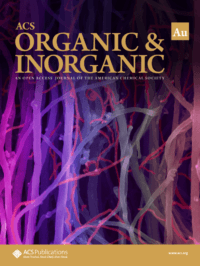ACS Publications is excited to announce the launch of a Data Availability Statement pilot at The Journal of Organic Chemistry, Organic Letters, and ACS Organic & Inorganic Au effective September 15, 2022. These journals will now require each peer-reviewed article to feature a Data Availability Statement and will achieve Level 2 in the ACS Research […]

ACS Publications is excited to announce the launch of a Data Availability Statement pilot at The Journal of Organic Chemistry, Organic Letters, and ACS Organic & Inorganic Au effective September 15, 2022. These journals will now require each peer-reviewed article to feature a Data Availability Statement and will achieve Level 2 in the ACS Research Data Policy—which encourages authors to publicly share all the data underlying the results reported in the article, preferably via archiving in an appropriate publicly available repository.
As the value of data from scientific research increases, so does the need for higher levels of visibility into the data sources involved in concluding the scientific results. In addition to increasing trust in the research findings, having findable, readable, and reusable data boosts the impact of the research and the associated publications. In addition, data sharing and data citation align with growing funder mandates on reporting data.
“The amount of data in organic chemistry has grown exponentially over the past years. Therefore, access to these data is imperative to maintain high quality in offering increased validation of the research by organic chemists and other scientists”, says Géraldine Masson, Deputy Editor, ACS Organic & Inorganic Au. She also suggests when preparing a Data Availability Statement, it’s important that “the authors confirm that the data supporting the findings of this study are available within the article [and/or] its supplementary materials. Authors are also required to provide a Data Availability Statement describing the public availability of the data underlying the conclusions drawn in the research article and provide a means of access, where applicable, by linking to the data, preferably through the use of a persistent identifier such as a DOI or an Accession Number assigned by a data repository”.
Submitting Your Article to a Pilot Journal
Starting on September 15, 2022, authors of The Journal of Organic Chemistry, Organic Letters, and ACS Organic & Inorganic Au will now be required to include a Data Availability Statement for all peer-reviewed articles. As part of the pilot, authors will have a new custom question at submission asking when the Data Availability Statement will be provided (Figure 1).
This statement can be included during manuscript submission or during the revision process, but all articles must have a Data Availability Statement prior to acceptance. This statement should be selected from a prewritten set (Figure 2) or can be combined if multiple statements apply and customized as needed.
Data Availability Statements should include confirmation that the data underlying the publication exists and specify where the data can be found, all persistent identifiers (Accession Numbers, DOIs, or URLs), and any relevant information on licensing restrictions. As a result, “Data is available upon request” will no longer qualify as a Data Availability Statement. ACS also encourages the deposition of data in open repositories. Authors may refer to re3data.org and FAIRsharing.org for information on available repositories, their certification status, and services offered.
Within the published article, the Data Availability Statement will be a standalone piece of text presented in the Associated Content section (Figure 3).
Building and Supporting Trust in Research
These are the critical steps that The Journal of Organic Chemistry, Organic Letters, ACS Organic & Inorganic Au, and ACS Publications are taking to build on our commitment to embracing the future of open science and maintaining ACS Publications’ positioning as the “Most Trusted. Most Cited. Most Read.”
Read the full editorial on the ACS Data Availability Statement Pilot.
For more information, view the FAQ section on Data Availability Statements.
